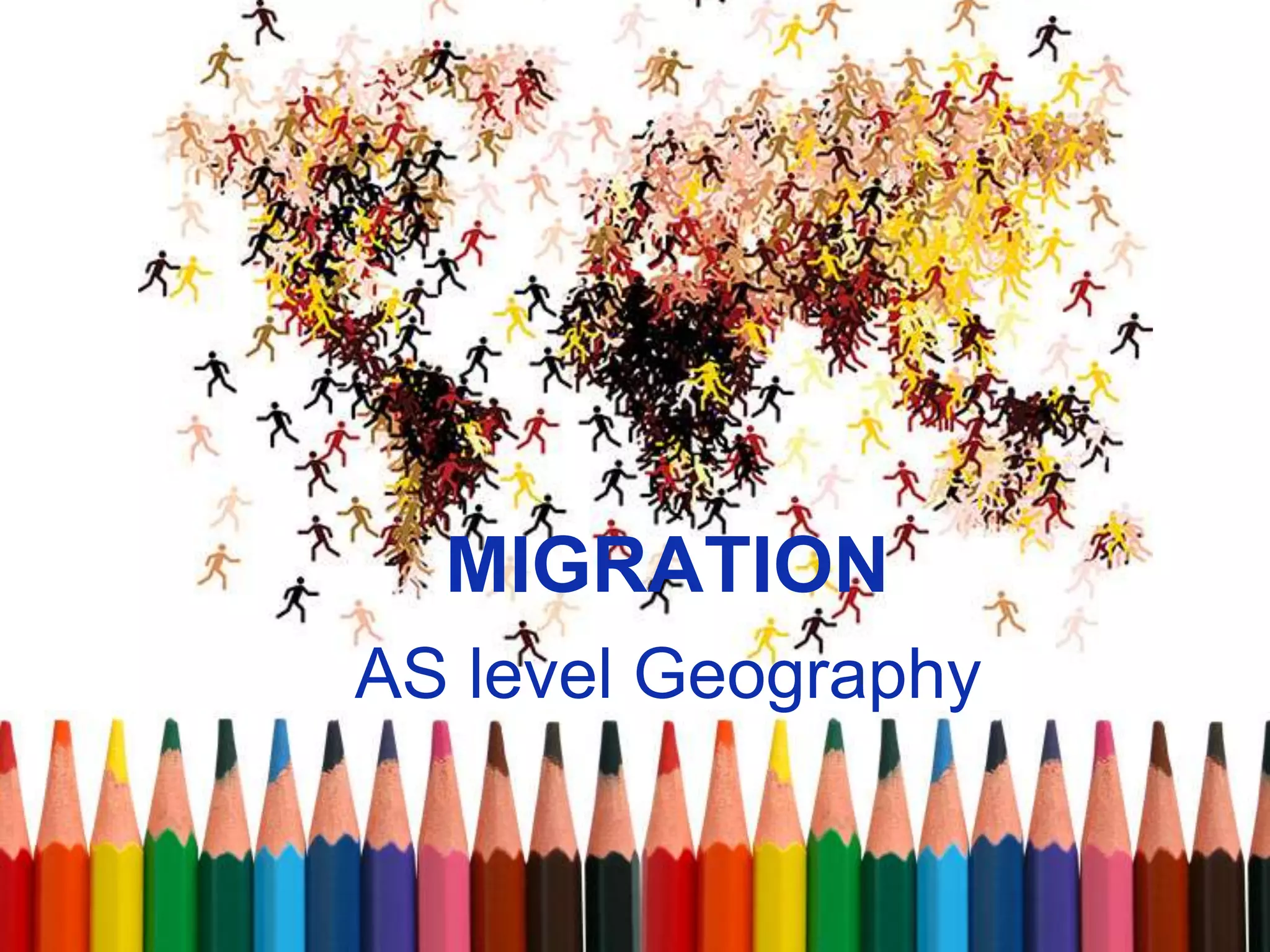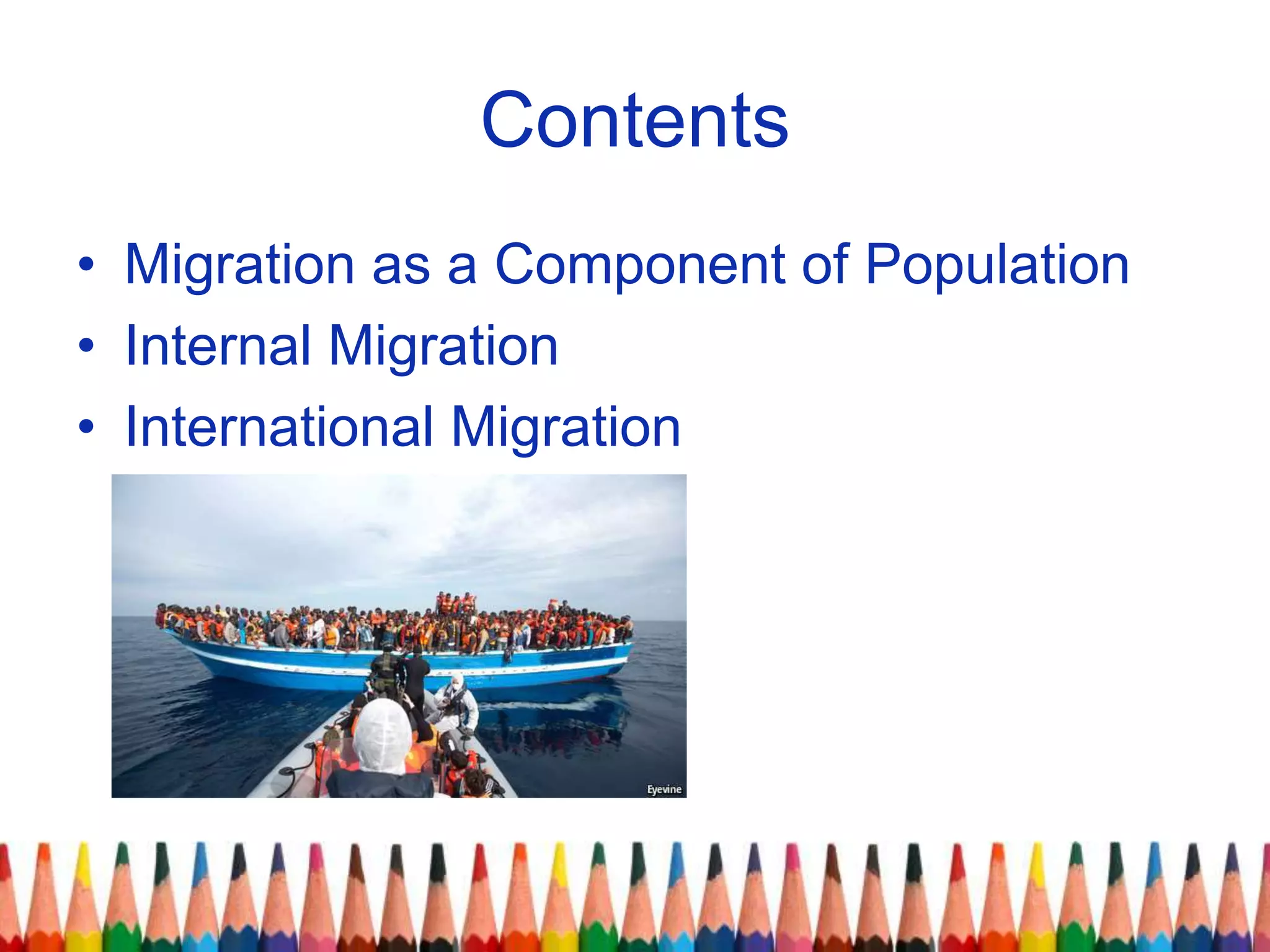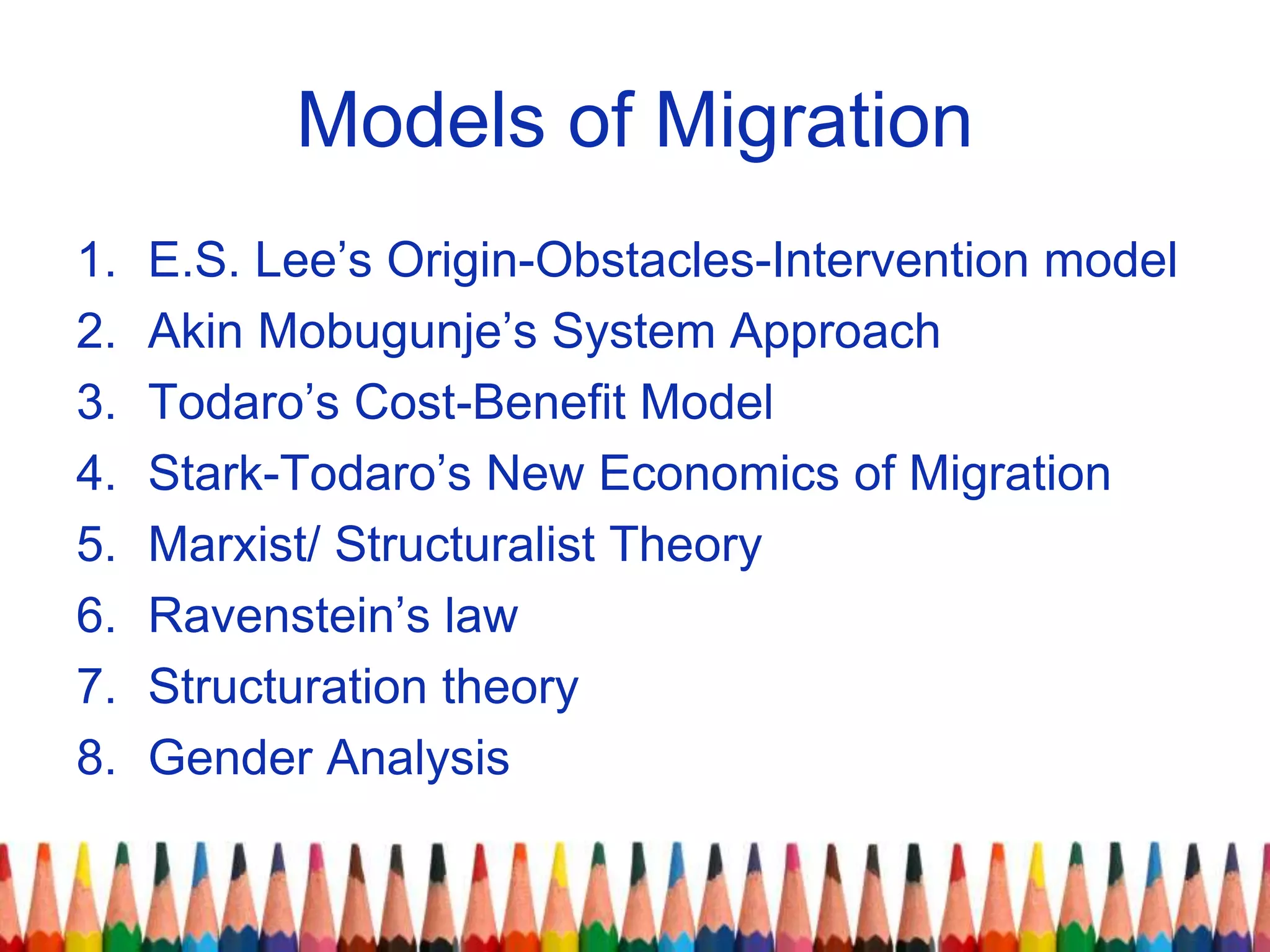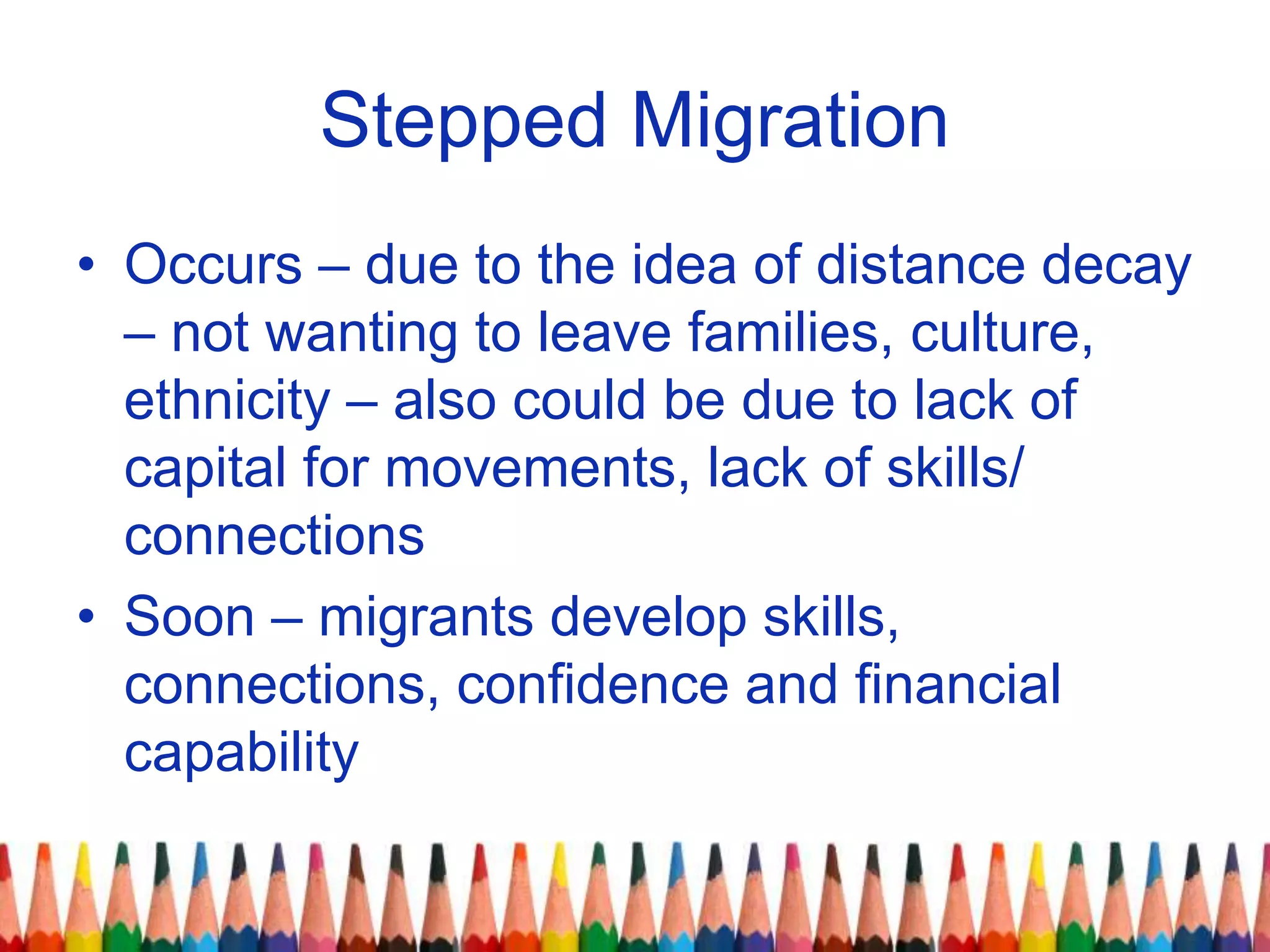The document provides a comprehensive overview of migration, defining key terms and processes including types of migration (internal, international, voluntary, forced) and the factors influencing migration patterns. It discusses various models of migration, socio-economic impacts, and the implications on political, environmental, and demographic aspects in both originating and receiving regions. The document also highlights contemporary issues related to migration, such as refugee crises and economic migration trends between different countries.















































































